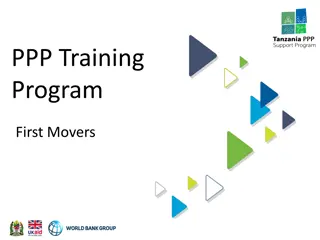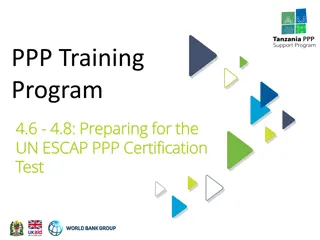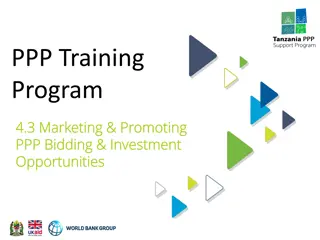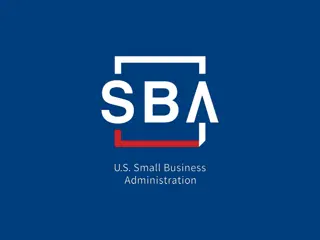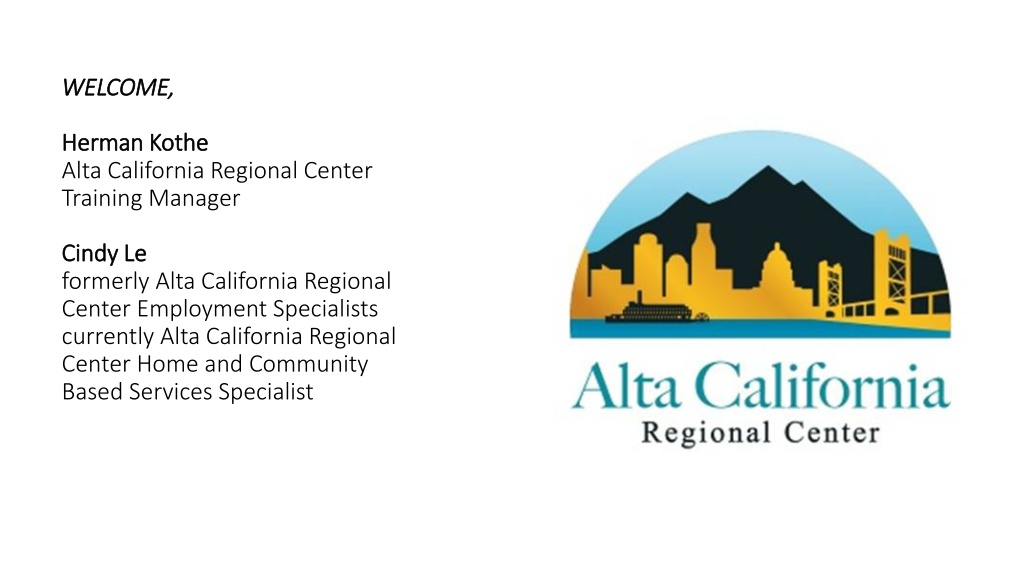
Understanding Regional Centers and Lanterman Act History
Explore the role of Regional Centers in supporting individuals with developmental disabilities, learn about the history of Lanterman Act, and discover eligibility criteria and services provided to enhance independence and integration into communities.
Download Presentation

Please find below an Image/Link to download the presentation.
The content on the website is provided AS IS for your information and personal use only. It may not be sold, licensed, or shared on other websites without obtaining consent from the author. Download presentation by click this link. If you encounter any issues during the download, it is possible that the publisher has removed the file from their server.
E N D
Presentation Transcript
WELCOME, WELCOME, Herman Kothe Herman Kothe Alta California Regional Center Training Manager Cindy Le Cindy Le formerly Alta California Regional Center Employment Specialists currently Alta California Regional Center Home and Community Based Services Specialist
The Regional Center System and the history of employment first legislation, policies and services Presented by SCDD, DOR, ACRC and FNRC
Learning Objectives Gain a familiarity with the regional center system Understand eligibility criteria and how to qualify for regional center services Learn how to access regional center services and supports Increase knowledge of employment options
Regional Centers Regional Centers are the agencies through which eligible individuals with intellectual and other developmental disabilities receive case management services to support them to participate and contribute as valued members of their communities and achieve their life goals. Regional Center System
Each Regional Center is a private, non-profit corporation Eligibility transfers across the state
A little bit of history The Lanterman Act A child was born with a disability Keep children at home with no support Send them to state run hospitals Legislation passed in 1965 to shift public resources from institutions to Communities The 21 non-profit regional centers serve as local resources to provide: Assessment of Eligibility and Diagnosis Service Coordination
The Lanterman Developmental Disabilities Services Act The Lanterman Act provides for the coordination and provision of services and supports to enable people with intellectual and developmental disabilities to lead more independent, productive, and integrated lives. Additionally, the Early Start Program provides services to infants and toddlers at risk of having a developmental disability. The Department carries out its responsibilities through contracts with 21 community-based, non-profit corporations known as regional centers, as well as through state-operated homes and facilities.
The Regional Center System: Serves about 400,000 peoplestatewide Is unique to California Are Voluntary agencies Administer Two Programs: Early Start Program- provides early intervention servicesto infants and toddlers, birth to 3 Regional Center-provides services to individuals age 3 and above throughout their lifespan
Regional Centers are contracted and funded by the State Department of Developmental Services (DDS) Budget POS Operations About 11% About 89% Not a State Agency
Service Coordinators Main point of contact for Clients and family Assigned caseloads
Plans of Support Individualized Family Service Plan (IFSP) For Infants and toddlers, birth to age 3 Individual Program Plans (IPP) For children age 3, youth and adults
Support Plans Goal/Outcome Vendor $$ Generic Agency Natural Support
Review/Monitor Support Plans Annually Children s Services (3-17) Adults (18+) Quarterly Residential (3+) Independent Living/ Supported Living with support (18+) Semi-Annually Early Start (0-3) Specialized Children s Services (3-17)
What do Regional Center Services Cost? There is no charge for assessment of eligibility, diagnosis and case management For some parents of a child birth through age 17 who are not eligible for Medi-Cal: Annual Family Program Fee (AFPF) of $200 or $150 or $0 Family Cost Participation Program (FCPP) share of cost 0 to 100% for respite and day care services Parental Fee Program share of cost % for 24-hour out-of-home placement in a regional center funded setting
Regional Center (Lanterman Act Eligibility) Ages 3 and Older
Conditions of Eligibility Lanterman DD Act (AB 846) Intellectual Disability (ID) Cerebral Palsy (CP) Epilepsy Autism 5thCategory other disabling conditions found to be closely related to ID or to require treatment similar to that required for ID individuals
Conditions of Eligibility Conditions of Eligibility In addition Such a disability originates before an individual attains age 18, continues or can be expected to continue indefinitely, and constitutes a substantial disability for such individuals. Substantial disability means a condition which results in major impairment of cognitive and/or social functioning.
Substantial Disability A condition which results in major impairment of cognitive and/or social functioning Receptive & Expressive Learning Self-care Mobility Self-direction Capacity for independent living Economic self-sufficiency The existence of significant limitations in 3 or more of the following areas:
Developmental Disability shall not include Disabling conditions that are: Solely psychiatric disorders Solely learning disorders Solely physical in nature
Who Gets Referred??? All ages Disability must occur prior to age 18, but referrals can be made at any age All socio-economic backgrounds Culturally diverse population Citizenship is not a requirement
The Intake Process How It Works Step 1 Request services Generally best for the family or person to make first contact- can t act unless parent or legal guardian consents Step 2 Initial interview Scheduled with an Intake Specialist Step 3 Specialists assessments to determine eligibility 120 calendar days time line
If Found Eligible Clients are assigned a Service Coordinator to develop an Individual Program Plan (IPP) within 60 days If determined ineligible Referrals to other resources Opportunity to appeal ACRC will always review new information
ACRC MUST exhaust Generic and Natural Supports first! Examples of Generic Resources Accessed by Families for Children School Districts Department of Rehabilitation (DOR) Medi-Cal In Home Supportive Services (IHSS) California Children s Services (CCS) * Also required to explore Private Medical Insurance
Employment First Law On October 9, 2013, Governor Brown signed AB 1041 (Chesbro) into law, establishing an "Employment First Policy" in the Lanterman Developmental Disabilities Services Act. In keeping with the Employment First Policy, the Work Services Program addresses the employment needs of persons with developmental disabilities. The Work Services Program provides work and community integration opportunities through Supported Employment Programs (SEPs). These programs are available to persons who are Regional Center clients.
Federal Law On July 22, 2014, the Workforce Innovation and Opportunity Act (WIOA) was signed into law. This landmark federal legislation makes significant changes to vocational rehabilitation and independent living programs in California and across the United States. WIOA, which replaces the Workforce Investment Act of 1998 and amends the Rehabilitation Act of 1973, is designed to help job seekers access employment, education, and support services to succeed in the modern labor market.
Regional Center Employment First Policies Alta California Regional Center's Employment First Policy Far Northern Regional Center's Employment First Policy
Senate Bill 639 signed into law Over 12,000 Californians with disabilities work for less than minimum wage in segregated settings. Some workers with disabilities currently earn less than $2 per hour doing menial work. Senate Bill 639 (Durazo) ensures all workers earn $15 per hour and can become financially independent. It creates a path that transitions workers with disabilities from segregated settings to integrated settings and allows workers with disabilities to earn a real wage and work alongside their colleagues. Several other states and cities have already ended paying people with disabilities less than minimum wage. It is time for California to do the same. SB639 | SCDD (ca.gov)
What Does the Bill Do? As of January 1st, 2022, no new 14(c) certificates may be awarded, meaning only providers who already had a certificate can continue to pay subminimum wage past January 1st of next year. The second significant milestone is January 1st of 2025. This is the cutoff date where subminimum wage will be completely prohibited in the state.
Embracing Employment First Philosophy Competitive Integrated Employment with Tom Pomeranz Part 1 YouTube Competitive Integrated Employment with Tom Pomeranz Part 2 - YouTube
Employment Resources: Supported Employment Supported Employment (SE) Services through the Department of Rehabilitation (DOR) and regional centers can be provided either through the vocational rehabilitation program or the Habilitation Services Program (HSP). SE services are aimed at finding competitive work in a community integrated work setting for persons with disabilities who need ongoing support services to learn and perform the work. SE placements can be individual placements, or group placements (called enclaves), or work crews, such as landscaping crews.
Employment Resources: Supported Employment Continued Support is usually provided by a job coach who meets regularly with the individual on the job to help the individual learn the necessary skills to work independently. As the individual gains mastery of the job, the support services are gradually phased out.
Department of Rehabilitation (DOR) The Department Of Rehabilitation DOR is the main vocational rehabilitation program SE service provider for adults with developmental disabilities. However, if the DOR is unable to provide services due to fiscal reasons, the regional center may be able to help individuals served get a job by funding SE under the HSP, or by referring them to other programs that provide SE-like services if these services are available in their area.
Employment First The California Department of Rehabilitation (DOR), California Department of Education (CDE), and California Department of Developmental Services (DDS) have entered into a new agreement consistent with the Employment First Policy and other laws to make employment in an integrated setting, at competitive wage, for individuals with Intellectual Disability and Developmental Disabilities (ID/DD) its highest priority. Competitive Integrated Employment Roadmap for Consumers (altaregional.org)
New Employment Resources Effective July 1, 2016, two significant programs were enacted through California's State Legislature to increase competitive, integrated employment for those with developmental disabilities, pursuant to the Welfare and Institutions Code, Sections 4870 and 4870 (d-g).
Competitive Integrated Employment (CIE) Incentive Payments To encourage regional center service providers to increase placement and retention of regional center consumers in competitive, integrated employment. $2000- 30 days placement $2500- 6 months $3000- 12 months
Paid Internship Program (PIP) To increase the vocational skills of consumers and create a pathway to a competitive integrated job As of July 1, 2021: 1,040 hours per internship year Can cover employer-related costs associated with the internship (workers comp) Can have multiple internships as long as it does not go over the 1,040 hours
Employment First The State of California Developmental Disabilities System: Employment Data Dashboard presents data on how well California is doing in implementing California's Employment First Policy.
Presenters Presenters








